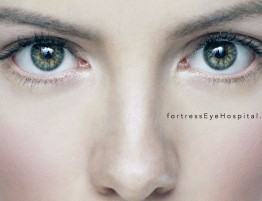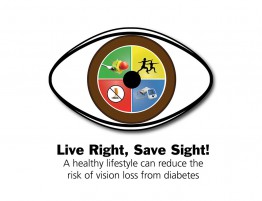By: Dr Omale Charles
Living in Nigeria means being exposed to the sun`s powerful rays and whilst most people are aware of the need to protect the skin from the sun`s damaging effects, less is known of its effect on the eye.
Whilst bright sunshine is dazzling and uncomfortable when viewed directly, it is in fact the invisible ultraviolet (UV) rays which cause all the damage.
Intense exposure to UV light can cause a “burn” to the eye surface not unlike skin sunburn.
This occurs particularly to skiers exposed to reflected light from snow or bathers by the sea, and is the same as a welding arc flash. Staring directly at the sun, during an eclipse, can permanently scar the retina and cause blindness.
More chronic long-term exposure leads to other problems. Firstly skin covering the eyelids can be damaged like skin anywhere else. This includes of course the usual wrinkling, drooping and irregular discolouration. Plastic and eye surgeons earn a good living from rejuvenating skin around the eyelids whether excising redundant folds of skin or injecting botox to remove wrinkles.
More seriously skin cancer can develop on this very exposed part of the body. Whilst surgical removal elsewhere may leave no more than a minor scar or cosmetic blemish, involvement of eyelid skin can be much more complicated. Irregular scarring on the eyelid can lead to difficulty in closing the eye when blinking or sleeping. Scarring and distortion of the eyelid margin can cause misdirected growth of eyelashes, inwards towards the eyeball.
Long term exposure to ultraviolet light causes abnormal tissue to grow on the cornea towards the pupil, appearing like a white triangular growth and called a pterygium. Apart from being unsightly, this tissue often becomes inflamed and dry, and when large can cause blurred vision. Proof that it is related to sun exposure can be seen from studies in Australia where pterygia become increasingly common in Queensland as one travels northwards towards the equator. In England, known for its short or non existent summers, the condition is almost unheard of in white Anglo-Saxon natives, but seen commonly in Indian immigrants.
A cataract is an opacification of the eye`s natural lens and occurs more frequently in those exposed to a lifetime of sunshine. Aging changes in the retina, known as age related macular degeneration, are also related to the amount of UV exposure. Both of these conditions cause blindness. Whereas a cataract is treatable with an operation, macular degeneration is the commonest cause of irreversible blindness in the elderly.
Although a disease of old age, it is especially common in those who spent many hours in the sun as children (this is the case with skin cancer also). This may be because the natural lens in children is more transparent and protects the retina less. Worryingly surveys report that at least 50% of children seldom or never wear sunglasses, and in Nigeria this figure is probably higher still. Parents seem much more likely to apply sun cream to their children, than to insist on them wearing sunglasses.
Finally certain medications such as antibiotics, the Pill, tranquilisers and treatments for skin conditions such as psoriasis and acne, increase the body’s sensitivity to sun, and similarly may amplify damage to the eyes.
So if you want to keep your eyes healthy, wear sunglasses when ever you are outdoors- and encourage your children to do the same.





